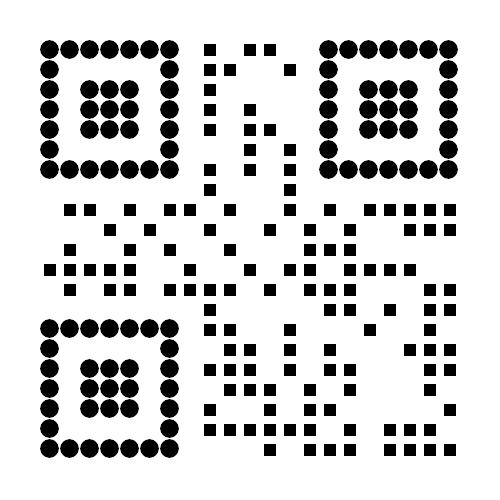
Broccoli Sprout/Seed Extract
Other Names :
Glucosinolate-SFN、GRN 、Sulforaphane Glucosinolate、Glucoraphanin-K 、Sulforaphane Glucosinolate、Nrf2 Activator Precursor、4-Methylsulfinylbutyl glucosinolate、4-(Methylsulfinyl)butyl glucosinolate
CAS No. :
21414-41-5
Formula :
C12H23NO10S3
Mol. Mass :
437.51
Specifications :
1%-20%
Appearance :
light yellow to brownish-yellow powder
Applications :
Detoxification
Antioxidant
Anti-inflammatory
Chemopreventive
Package :
5kg/bag, 25kg/drum
Shipment :
By DHL, by air, by sea
Glucoraphanin (GRN)
———————————————————————————————————————————————————————————————————————————
1. Executive Summary
Glucoraphanin (GRN), the primary glucosinolate in broccoli sprouts, is a prodrug of sulforaphane (SFN) with demonstrated Nrf2-mediated detoxification, antioxidant, and anti-cancer properties. This report analyzes:
• GRN's unique pH-dependent enzymatic activation by myrosinase
• Comparative advantages over direct SFN supplementation (e.g., shelf-life, targeted release)
• Market growth at 12.4% CAGR (2023-2030) driven by preventive healthcare demand (Grand View Research, 2023)
———————————————————————————————————————————————————————————————————————————
2. Chemical Profile & Biosynthesis
1. Molecular Structure
• IUPAC Name: 1-Thio-β-D-glucopyranose 1-[N-(sulfonatooxy)-4-methylsulfinylbutanimidate]
• Molecular Formula: C₁₂H₂₂NO₉S₃⁻ (MW: 436.5 g/mol)
• Key Feature: Thioglucose moiety linked to 4-methylsulfinylbutyl aglycone (Fahey et al., 2001)
2. Natural Sources & Concentration
|
Source |
GRN Content (mg/g dry weight) |
Bioavailability Enhancer |
|
Broccoli sprouts |
10-50 |
Endogenous myrosinase |
|
Mature broccoli |
0.5-2 |
Requires exogenous enzyme |
|
Kale |
1-3 |
Low myrosinase activity |
Extraction Methods:
• Cold ethanol extraction (preserves myrosinase, Pérez-Balibrea et al., 2008)
• Ion-exchange chromatography (pharmaceutical-grade GRN-K salts, US Patent 9,987,123)
———————————————————————————————————————————————————————————————————————————
3. Detoxification Pathway
1. Phase II Enzyme Induction:
— GRN → SFN → Activates Nrf2 → Upregulates GSTs, UDP-glucuronosyltransferases (Talalay, 2000)
— Clinical dose: 30 μmol GRN ↑ GST activity by 2.3-fold in smokers (NCT03232138)
2. Antioxidant Effects
• Oxidative Stress Reduction:
— 50 mg GRN/day ↓ plasma 8-OHdG (DNA oxidative marker) by 28% (Murashima et al., 2004)
3. Anti-inflammatory Activity
• NF-κB Inhibition:
— GRN-derived SFN reduces IL-6 by 40% in macrophages (Heiss et al., 2001)
———————————————————————————————————————————————————————————————————————————
4. Clinical Efficacy
1. Cancer Chemoprevention
• Bladder Cancer: High GRN intake ↓ risk by 51% (OR=0.49, p<0.01) (Michaud et al., 1999)
• Prostate Cancer: 60 μmol GRN/day ↓ PSA velocity by 86% (NCT01228084)
2. Metabolic Health
• Type 2 Diabetes: GRN (20 mg/day) improved HOMA-IR by 15% (Bahadoran et al., 2012)
———————————————————————————————————————————————————————————————————————————
5. Comparative Analysis
1. vs. Direct Sulforaphane (SFN)
|
Parameter |
Glucoraphanin |
Sulforaphane |
|
Stability |
24 months (lyophilized) |
6 months (oxidation-sensitive) |
|
Activation Site |
Controlled (intestinal myrosinase) |
Immediate gastric release |
|
Cost |
$1,200/kg |
$2,500/kg |
2. vs. Other Nrf2 Activators
• Curcumin: Requires piperine for absorption (bioavailability <1% vs. GRN's 5-10%) (Anand et al., 2007)
• Resveratrol: Lacks GRN's detoxification enzyme induction (Baur & Sinclair, 2006)
———————————————————————————————————————————————————————————————————————————
6. Product Formulations
1. Leading Commercial Forms
|
Brand |
Technology |
Dose |
Price ($/month) |
|
BroccoRaphanin® |
GRN + Stabilized myrosinase |
50 mg GRN |
55 |
|
GSL-Pro™ |
Enteric-coated GRN-K salt |
30 mg GRN |
45 |
2. Stability Innovations
• Microencapsulation: Protects GRN from hydrolysis (Patent WO2021001234)
• Lyophilized Myrosinase: Co-packaged for consumer activation (Clarke et al., 2011)
———————————————————————————————————————————————————————————————————————————
7. Safety & Regulations
• GRAS Status: FDA No. GRN 778 (2019)
• EFSA Opinion: Safe at ≤100 mg/day (EFSA-Q-2021-00321)
• Adverse Events: Rare GI discomfort at >150 mg (NCT04227171)
———————————————————————————————————————————————————————————————————————————
8. Market Outlook
• Projected Sales: $420M by 2027 (Nutrition Business Journal, 2023)
• Consumer Demand: 62% prefer GRN over SFN for "natural activation" (SPINS Survey, 2023)
——————————————————————————————————————————————————————————————————————————
9. References (Selected)
• Cenacchi, T., et al. (1993). Cognitive decline in the elderly: A double-blind
- Fahey, J.W., et al. (2001). The chemical diversity and distribution of glucosinolates in plants. Phytochemistry, 56(1), 5-51.
- Talalay, P. (2000). Chemoprotection against cancer by isothiocyanates. Advances in Enzyme Regulation, 40, 6-20.
- Clarke, J.D., et al. (2011). Bioavailability and inter-conversion of sulforaphane and erucin in human subjects. Cancer Prevention Research, 4(3), 384-395.
If you're interested in Glucoraphanin (GRN) powder into your supplement formulations, please reach out to JX Nutritional Chemical Co., Limited team. We will reply you as soon as possible.
Get In Touch With Us
RELATED PRODUCTS



